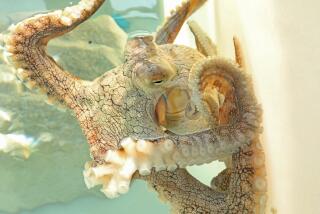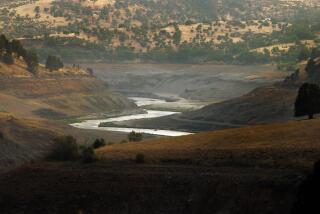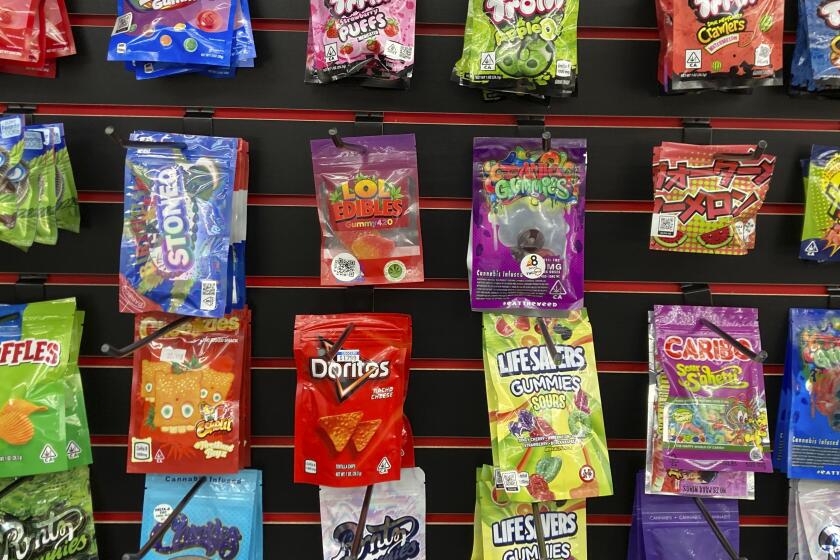California caviar is big fish on this side of the pond
ELVERTA, Calif. — With your flute of French Champagne this weekend, how about a little caviar on toast from Sacramento?
To the surprise of many would-be gourmands, the halcyon days of caviar are over. Most of the world’s production no longer comes from such exotic spots as Russia’s Volga River and western Asia’s Caspian Sea. Those supplies are almost completely depleted from pollution, poaching, and overfishing of the caviar-egg-bearing sturgeon.
Instead, it turns out that Sacramento County now is the epicenter of U.S. sturgeon and caviar production, and experts say California now accounts for an estimated 70% to 80% of U.S. production.
Quiz: How much do you know about California’s economy?
“Wild caviar is gone, and we can all forget about it,” said Alexandre Petrossian, sales director and grandson of the founder of the 92-year-old French company that bears the family’s name, known worldwide for premium caviar. Farm-raised sturgeon and their eggs are “the next generation of caviar,” he said.
And to see where these fish eggs are now being harvested, drive just 20 miles north of the state Capitol to the scruffy, rice-growing community of Elverta (pop. 5,492). Although caviar isn’t on any local menu, it’s available, custom-packed at up to $2,757 per kilogram — 2.2 pounds — for a bon vivant risking the drive on a narrow, levee-top road to Sterling Caviar, a nondescript fish farm.
Sterling raises thousands of the prehistoric-looking fish that have barely evolved in the last quarter of a million years. The toothless bottom-feeders have shark-like, scaleless skin, bony plates along their backs and four feelers protruding from their mouths.
Segregated by age — fingerlings, adolescent and mature — sturgeon circle and splash in more than a dozen 70,000-gallon tanks. Each holds more than 1,000 fish and is sheltered in dimly lighted, hangar-like buildings where the loudest sounds are the occasional splash of a jumping fish, water pumps and the rattling of high-nutritional food pellets in overhead feeding pipes.
Most of the fish older than 3 years are females. At age 7 or 8, the caviar is harvested from the sexually mature females between mid-February and June. Then it’s lightly salted and aged in a cooler for two to three months before being ready to eat. Almost all the males are culled and butchered for meat that goes to wholesalers for shipment to restaurants, fishmongers and for export.
How the sturgeon and caviar business landed in Sacramento County is a serendipitous tale that started with Serge Doroshov, a fish research biologist who defected from the former Soviet Union and got a job at nearby UC Davis. Local farmers approached him in 1978 for help setting up a sturgeon hatchery. Luckily, the nearby Sacramento River already was supporting a population of wild, white sturgeon, enough to create a breeding population. The breeding program with wild fish lasted from 1985 to 1987, but the first farmed caviar wasn’t ready for harvest and sale until 1994.
The demise of Caspian caviar and the rise of California’s offerings may be well known among dedicated connoisseurs but can be shocking news to the uninitiated, said Petrossian, who operates out of New York. His family’s Paris company is a major player in the international caviar trade. The Petrossian family operates restaurants and gourmet shops in West Hollywood, New York, Las Vegas, Dubai and Sao Paulo, Brazil.
“They might ask for the famous Beluga that we haven’t sold in six or seven years. But we tell people to choose another one they prefer,” he said. “Most of the time people tend to take the American caviar because it’s not too salty, not too fishy, looks presentable and has larger, firm eggs.”
California caviar comes in many names, some with very Russian-sounding ones such as Tsar Nicoulai, Tsar Imperial or Malossol. Some names even have local flavor such as Petrossian’s Special Reserve Alverta, referring to eggs from Sterling’s farm.
Having a source just a six-hour drive away makes for tastier dishes, said Ashley James, executive chef of the Four Seasons Hotel in Los Angeles.
“It’s a wonderful thing to buy local whenever you can,” James said. “Not only does it benefit the environment, but the caviar retains freshness, which plays into its integrity and flavor.”
Caviar is served in many ways, most often as an appetizer. It’s customarily accompanied with plain or buttered corners of toasted, thinly sliced white bread or Russian-style buckwheat pancakes called blini, along with a dollop of creme fraiche or sour cream.
Eating tiny fish eggs isn’t for everyone. But for some diners, it’s a must-have luxury. Retail prices on the Internet for Northern California caviar range from $62 to $88 for a 1-ounce jar.
Aficionados say they crave caviar’s distinctive flavor, the round shape and a texture that literally explodes on the roof of the mouth. It comes in a range of colors including gray, light green, brown, gold and inky black. Caviar, experts stress, is generally considered the eggs of the sturgeon, although sometimes confused with caviar-like delicacies such as the eggs, or roe, of the salmon.
Northern California’s premium caviar adds a flourish to many dishes served at Fleur de Lys French restaurant in San Francisco, said owner and chef Hubert Keller. “We use it regularly. When we have a little sole, we put a spoon of caviar on the top,” he said. “Caviar is the ultimate indulgence.”
Currently, the bulk of the national harvest is shipped from Elverta by Sterling Caviar. A second local caviar producer, Tsar Nicoulai Caviar, is a boutique operation just south of Sacramento. It supplies many top-rated epicurean shops and restaurants.
In 2012, Sterling, the California unit of multinational Stolt-Nielsen Ltd., produced about 22,000 pounds of caviar and 67,500 pounds of sturgeon meat, a byproduct. The company plans to boost caviar output by 50% over the next three years.
But it’s a tough business, said Enrique Castaño, Sterling’s managing director in Elverta.
“We spend as much on electricity as a small city in the United States,” he said. “People think that because caviar is expensive that raising sturgeon to produce caviar is very profitable,” said Castaño. Not so, he said: “The per-kilogram cost of caviar is very, very high.”
More to Read
Inside the business of entertainment
The Wide Shot brings you news, analysis and insights on everything from streaming wars to production — and what it all means for the future.
You may occasionally receive promotional content from the Los Angeles Times.











